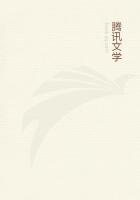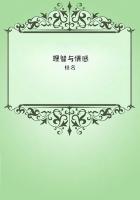Some further circumstances add their testimony to that of the surrounded and surrounding cells. When the pebble projects sharply and forms a sort of dihedral angle, one of whose faces is more or less vertical and the other horizontal, this angle is a favourite site with the Mason, who thus finds greater stability for her edifice in the support given her by the double plane. These sites appear to me to be in great request with the Chalicodoma, considering the number of nests which I find thus doubly supported. In nests of this kind, all the cells, as usual, have their foundations fixed to the horizontal surface; but the first row, the row of cells first built, stands with its back against the vertical surface.
Well, these older cells, which occupy the actual edge of the dihedral angle, are always female, with the exception of those at either end of the row, which, as they belong to the outside, may be male cells.
In front of this first row come others. The female cells occupy the middle portion and the male the ends. Finally, the last row, closing in the remainder, contains only male cells. The progress of the work is very visible here: the Mason has begun by attending to the central group of female cells, the first row of which occupies the dihedral angle, and has finished her task by distributing the male cells round the outside.
If the perpendicular face of the dihedral angle be high enough, it sometimes happens that a second row of cells is placed above the first row backing on to that plane; a third row occurs less often.
The nest is then one of several storeys. The lower storeys, the older, contain only females; the upper, the more recent storey, contains none but males. It goes without saying that the surface layer, even of the lower storeys, can contain males without invalidating the rule, for this layer may always be looked upon as the Chalicodoma's last work.
Everything therefore contributes to show that, in the Mason-bee, the females take the lead in the order of primogeniture. Theirs is the central and best-protected part of the clay fortress; the outer part, that most exposed to the inclemencies of the weather and to accidents, is for the males.
The males' cells do not differ from the females' only by being placed at the outside of the cluster; they differ also in their capacity, which is much smaller. To estimate the respective capacities of the two sorts of cells, I go to work as follows: I fill the empty cell with very fine sand and pour this sand back into a glass tube measuring 5 millimetres (.195 inch.--Translator's Note.) in diameter.
>From the height of the column of sand we can estimate the comparative capacity of the two kinds of cells. I will take one at random among my numerous examples of cells thus gauged.
It comprises thirteen cells and occupies a dihedral angle. The female cells give me the following figures, in millimetres, as the height of the columns of sand:
40, 44, 43, 48, 48, 46, 47
(1.56, 1.71, 1.67, 1.87, 1.87, 1.79, 1.83 inches.--Translator's Note.), averaging 45. (1.75 inches.--Translator's Note.)The male cells give me:
32, 35, 28, 30, 30, 31
(1.24, 1.36, 1.09, 1.17, 1.17, 1.21 inches.--Translator's Note.), averaging 31. (1.21 inches.--Translator's Note.)The ratio of the capacity of the cells for the two ***es is therefore roughly a ratio of 4 to 3. The actual contents of the cell being proportionate to its capacity, the above ratio must also be more or less the ratio of provisions and sizes between females and males.
These figures will assist us presently to tell whether an old cell, occupied for a second or third time, belonged originally to a female or a male.
The Chalicodoma of the Sheds cannot give us any information on this matter. She builds under the same eaves, in excessively populous colonies; and it is impossible to follow the labours of any single Mason, whose cells, distributed here and there, are soon covered up with the work of her neighbours. All is muddle and confusion in the individual output of the swarming throng.
I have not watched the work of the Chalicodoma of the Shrubs with close enough attention to be able to state definitely that this Bee is a solitary builder. Her nest is a ball of clay hanging from a bough. Sometimes, this nest is the size of a large walnut and then appears to be the work of one alone; sometimes, it is the size of a man's fist, in which case I have no doubt that it is the work of several. Those bulky nests, comprising more than fifty cells, can tell us nothing exact, as a number of workers must certainly have collaborated to produce them.















